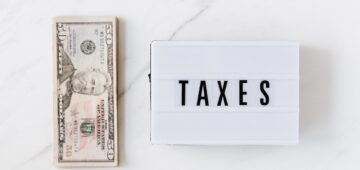In November each year, we remind investors over age 70 1/2 to make sure they have taken their Required Minimum Distribution (RMD) from their retirement accounts before the end of the year. If an investor does not need money from their IRAs, the distribution is often an unwanted taxable event. Although we can’t do much about the RMD itself, we can find ways to reduce their taxes overall.
Clients who have after-tax contributions to retirement accounts often ask about which account they should take their RMDs, but it doesn’t matter. The IRS considers IRA distributions to be pro-rata from all sources, regardless of the actual account you use to make the distribution. Whichever account you use to take the RMD, the tax due is going to be the same.
If all your contributions were pre-tax, your basis in all accounts is zero and you can ignore the comments above. Note that you do not have to take a distribution from each individual account, even though each custodian is likely to send you calculations and reminders about your RMD for that account. All that matters is that your total distribution meets or exceeds the RMD for all accounts each year.
For investors taking RMDs, here are 5 steps you can take to reduce your income taxes:
1) Asset Location. Avoid generating taxable income in your taxable accounts by moving taxable bonds, REITs, and other income generating investments to your retirement account. This will keep the income from the investments out of a taxable account, leaving your RMD as your primary or only taxable event. Placing stable, income investments in your IRA will also be a benefit because it will keep your IRA from having high growth. Otherwise, if your IRA grows by 20%, your RMDs will grow by 20%. (Actually more than 20%, since the percentage requirement increases each year with age).
Keeping stocks and ETFs in a taxable account allows you to choose when you want to harvest those gains and also allows you to receive favorable long-term capital gains treatment (15% or 20%), a tax benefit which is lost if those positions are held in an IRA. Lastly, if you hold the stocks for life, your heirs may receive a step-up in basis, which is yet another reason to hold stocks in a taxable account and not your retirement account.
2) Charitable Donations. If you itemize your tax return and are looking for more deductions, consider increasing your charitable donations. And instead of giving a cash donation, donate shares of a highly appreciated stock or mutual fund and you will get both the charitable donation and you’ll avoid paying capital gains on the position later.
3) Stuff your deductions into one year. Many investors in their 70’s have paid off their mortgage and it is often a “wash” between taking the standard deduction versus itemizing. If this is the case, consider alternating years between taking the standard deduction and itemized deductions. In the year you itemize, make two years of charitable donations and property taxes. How do you do this? Pay your property tax in January and the next one in December and you have put both payments into one tax year. Do the same for your charitable contributions. The following year, you will have few deductions to itemize and will take the standard deduction instead.
4) Harvest losses. Investors are often reluctant to sell their losers, but selectively harvesting losses can save money at tax time. Besides offsetting any capital gains, losses can be applied against ordinary income of up to $3,000 a year, and any leftover losses carry forward indefinitely.
5) Roth IRA. If you don’t need your RMD because you are still working, consider funding a Roth IRA. There is no age limit on a Roth IRA, so as long as you have earned income, you are eligible to contribute $6,500 per year. If you qualify for a Roth, then your spouse would also be eligible to fund a Roth, even if he or she is not working. Although the Roth is not tax deductible, the contribution does enable you to put money into a tax-free account, which will benefit you, your spouse, or your heirs in the future.
There is a “five year rule” which requires you to have a Roth open for five years before you can take tax-free withdrawals. This rule applies even after age 59 1/2, so bear that in mind if you are establishing a Roth for the first time.
One additional suggestion: although you have until April 1 of the year after you turn 70 1/2 to take your first RMD, waiting until then will require you to have to take two RMDs in that year. It may be preferable to take your first RMD in the year you turn 70 1/2, by December 31.







